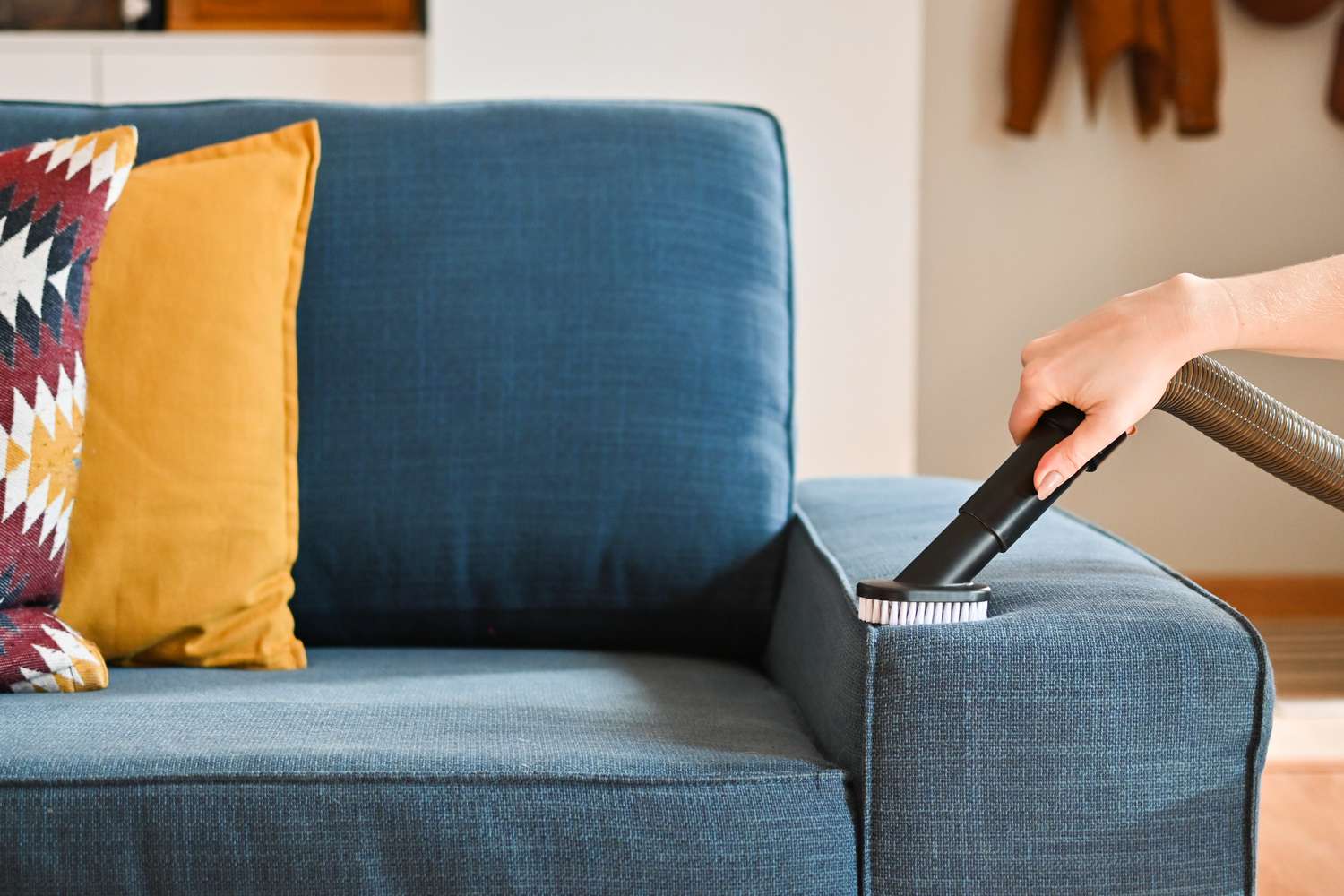Embracing Dry Cleaning: A Comprehensive Guide on How to Clean Fabric Sofa Without Water
Introduction
Fabric sofas are comfortable and stylish additions to any living space, but they can be a magnet for spills, stains, and dirt. Traditional methods of cleaning often involve water, but what if you want to avoid the risk of water damage or deal with a fabric that is not water-friendly? In this guide, we will explore the art of cleaning fabric sofas without water, offering effective techniques and tips to keep your sofa looking pristine.
Understanding Your Fabric
Before diving into the cleaning process, it’s crucial to understand the type of fabric your sofa is made of. Different fabrics require different cleaning methods. Check the manufacturer’s care label for guidance on the recommended cleaning approach. Common fabric codes include W (water-based cleaners are safe), S (use only dry-cleaning solvents), SW (either water-based or dry-cleaning solvents are safe), and X (vacuum only; no water or solvents).
Materials Needed
Gather the following materials before you start cleaning your fabric sofa without water:
- Vacuum Cleaner: To remove loose dirt and debris.
- Dry Cleaning Solvent: Suitable for S and SW coded fabrics.
- White Vinegar: Effective for removing odors.
- Baking Soda: Absorbs and neutralizes odors.
- Soft-bristled Brush or Microfiber Cloth: For gentle scrubbing.
- Clean, Dry Cloth or Sponge: To blot and absorb stains.
- Lint Roller: Ideal for pet hair removal.
Step-by-Step Cleaning Guide
1. Vacuum Thoroughly
Use a vacuum cleaner with a soft brush attachment to remove loose dirt, dust, and debris from the sofa. Pay special attention to crevices, seams, and areas where crumbs and pet hair may accumulate.
2. Identify and Test a Hidden Area
Before applying any cleaning solution, identify a hidden or inconspicuous area of the sofa to test the chosen method. This ensures that the cleaning solution won’t cause discoloration or damage to the fabric.
3. Spot Clean Stains
For spot cleaning, apply a small amount of dry cleaning solvent directly onto a clean, dry cloth or sponge. Gently blot the stained area, working from the outer edges toward the center. Avoid rubbing, as it may spread the stain.
4. Treat Odors with Vinegar
Mix equal parts white vinegar and water in a spray bottle. Lightly mist the fabric, focusing on areas with lingering odors. Allow it to air dry. The vinegar smell will dissipate as it dries, leaving your sofa refreshed.
5. Deodorize with Baking Soda
Sprinkle baking soda evenly over the entire sofa, paying extra attention to areas with odors. Let it sit for at least 15 minutes to absorb odors. Vacuum the sofa thoroughly to remove the baking soda residue.
6. Brush Away Stains
For tougher stains or dried-on spills, use a soft-bristled brush or a microfiber cloth to gently scrub the stained area. Be cautious not to damage the fabric, and always brush in the direction of the fabric’s grain.
7. Lint Roll for Pet Hair Removal
If your fabric sofa is a magnet for pet hair, use a lint roller to efficiently remove hair and fuzz. Roll it over the surface of the sofa, focusing on areas where pet hair tends to accumulate.
8. Refresh with Fresh Air
On a sunny day, open windows and doors to let fresh air circulate around the sofa. This helps eliminate any remaining odors and gives your sofa a natural refresh.
9. Regular Maintenance
Incorporate regular maintenance into your cleaning routine. Vacuum the sofa at least once a week to prevent dirt and debris from settling into the fabric. Promptly address spills and stains to prevent them from becoming permanent.
10. Professional Cleaning for Stubborn Stains
If stubborn stains persist or if your sofa has not been cleaned for an extended period, consider professional upholstery cleaning services. They have specialized equipment and expertise to tackle deep-seated dirt and stains.
Frequently Asked Questions (FAQs)
1. Can I use water on a fabric sofa with an S code?
No, fabrics with an S code are designated for dry-cleaning solvents only. Using water may lead to damage or discoloration.
2. What is a suitable dry cleaning solvent for fabric sofas?
Look for a mild and upholstery-safe dry cleaning solvent available at home improvement or upholstery supply stores.
3. How often should I clean my fabric sofa without water?
Perform routine maintenance such as vacuuming once a week, and spot clean as needed. A more thorough cleaning can be done every 6 to 12 months or as required.
4. Can I use any type of brush to scrub stains on my fabric sofa?
Use a soft-bristled brush or a microfiber cloth to avoid damaging the fabric. Test in an inconspicuous area first to ensure compatibility.
5. Is it safe to use white vinegar to remove odors from my sofa?
Yes, white vinegar is a safe and effective natural deodorizer. Ensure it’s mixed with water and applied in a well-ventilated area.
6. Can I use a regular vacuum cleaner for pet hair removal?
Yes, a vacuum cleaner with a soft brush attachment is effective for removing pet hair. Alternatively, use a lint roller for smaller areas.
7. How long should I let the baking soda sit on my sofa to deodorize it?
Allow the baking soda to sit for at least 15 minutes to absorb odors before vacuuming it off.
8. Can I use a fabric softener on my fabric sofa?
Avoid using fabric softeners, as they may leave a residue on the fabric. Stick to recommended cleaning methods.
9. What should I do if a spill occurs on my fabric sofa?
Blot the spill immediately with a clean, dry cloth or sponge. Avoid rubbing, as it can spread the spill. Follow up with spot cleaning as needed.
10. Are there specific fabrics that are more challenging to clean without water?
Some delicate fabrics, such as silk or velvet, may require specialized cleaning methods. Always check the manufacturer’s recommendations for these fabrics.
Conclusion
Cleaning a fabric sofa without water is a practical and effective way to maintain its appearance and prolong its lifespan. By understanding your fabric, choosing the right cleaning methods, and incorporating regular maintenance, you can keep your sofa looking fresh and inviting. Follow the steps outlined in this comprehensive guide, and you’ll be well-equipped to tackle stains, odors, and general wear on your fabric sofa with confidence.

